Introduction
In the rapidly evolving world of eCommerce, understanding the nuances between customization and personalization is paramount for businesses aiming to elevate the customer experience. Customization allows users to tailor products to their specific preferences, enhancing satisfaction and engagement by providing control over product design and functionality. Conversely, personalization uses data insights to craft unique experiences that resonate with individual behaviors and preferences, creating a seamless and memorable shopping journey.
This article delves into the key differences and benefits of both strategies, showcasing real-world examples and expert insights. It also explores the challenges businesses face in implementing these approaches and offers guidance on how to effectively integrate customization and personalization to achieve maximum impact. By examining successful case studies and understanding the operational considerations, businesses can better navigate the competitive landscape and foster deeper connections with their customers.
Definitions and Key Differences
Customization involves tailoring a product or service to meet the specific preferences of the user, allowing them to modify aspects such as design, features, and functionalities. This user-driven approach empowers customers to create a product that fits their individual needs perfectly. Conversely, customization utilizes information and insights to create a distinct encounter for users according to their behavior, preferences, and previous interactions. 'According to a Gartner® Report, tailoring experiences is about forming genuine connections, akin to a favorite coffee shop knowing your order before you say it.'. This business-driven strategy aims to improve user satisfaction through tailored recommendations and content.
The influence of customization in digital commerce cannot be overstated. It begins with creating a customer-centric culture, ensuring every decision and interaction is geared towards optimizing the user experience. 'BCG's tailored approach emphasizes five promises: empower me, know me, reach me, show me, and delight me.'. These promises are crucial in deepening digital client relationships and are delivered through a blend of human touch and advanced technology, such as AI and machine learning algorithms.
For instance, Dublin Airport's new checkout-free store, powered by Zippin technology, demonstrates customization by offering a seamless shopping experience without lines, tailored to the needs of travelers. This approach not only meets immediate demands but also fosters a deeper, personalized connection with clients. Companies that excel in personalization, often digital natives, create a competitive edge that is difficult to replicate, making personalization a do-or-die business goal.
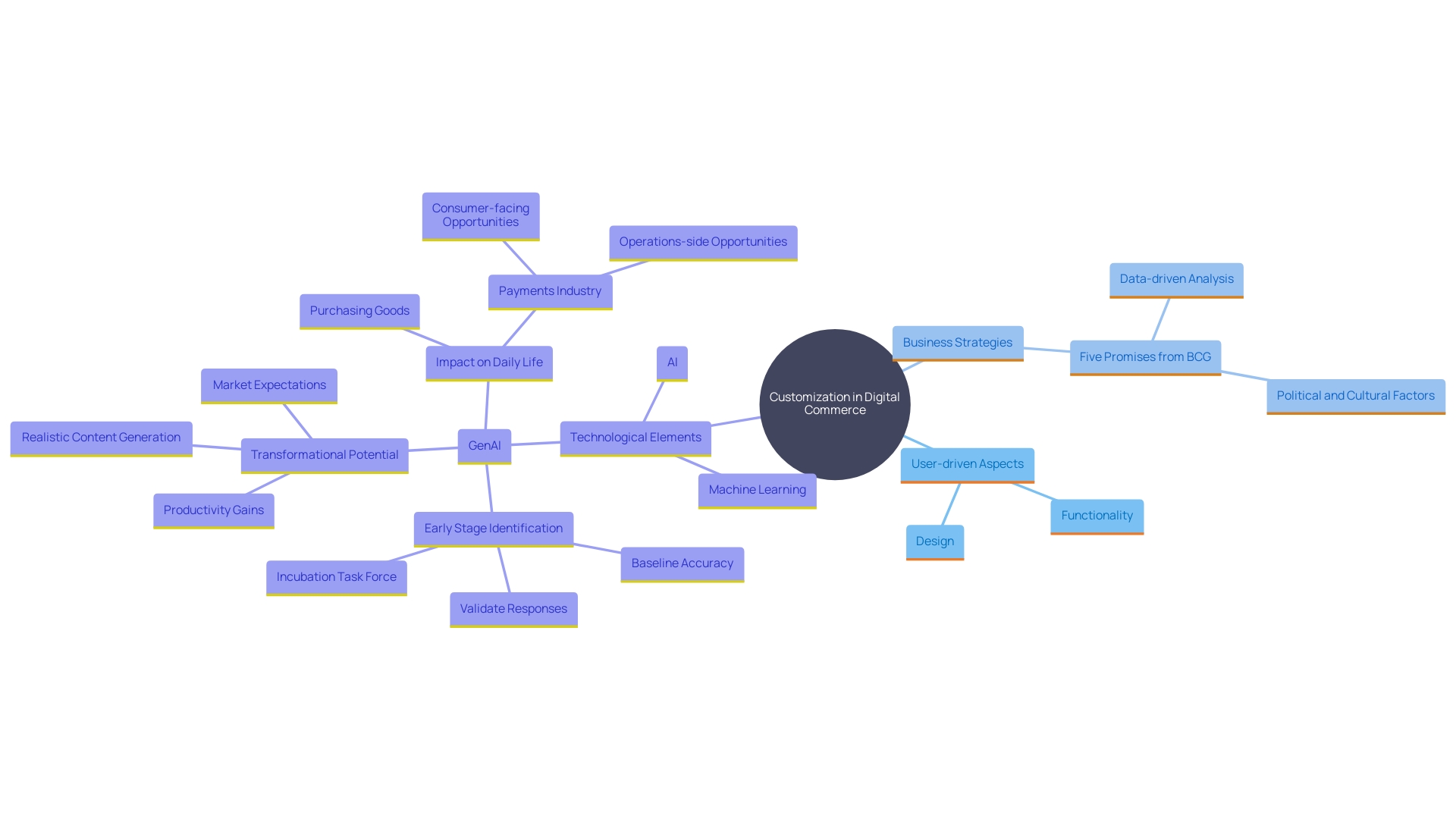
How Customization Works in eCommerce
In eCommerce, customization enables individuals to tailor products to their specific preferences before purchasing. This includes selecting options like color, size, and additional features. 'Platforms such as Nike's Nike By You allow individuals to design their own shoes, giving them control over aesthetics and functionality.'. This approach significantly enhances customer satisfaction and drives engagement by enabling users to express their individuality.
The movement towards customization is not solely about providing options but about crafting a distinctive and unforgettable shopping journey. A recent study by Medallia revealed that 61% of consumers are willing to spend more if they receive a tailored interaction, yet only 26% feel they receive high levels of personalization in retail. This gap presents a substantial opportunity for eCommerce businesses to improve and capture more revenue.
Retailers are increasingly focused on client satisfaction as the core of their innovation strategies. Personalization goes beyond mere product customization; it's about delivering a seamless and enjoyable shopping journey that fosters customer loyalty. As Ben Hancock highlights, the retail sector is undergoing a seismic shift, driven by emerging technologies that reshape our expectations of the shopping experience.
Moreover, the significance of customization is underscored by the need for businesses to stand out in a competitive market. According to Forbes, personalization through bespoke products and services is one of the top ten business trends for 2024. This trend is essential for capturing the all-important consumer dollar, especially in a time when buyers are more selective about their spending.
Nike's initiative exemplifies how giving individuals the power to personalize their purchases can lead to higher satisfaction and engagement. This strategy not only fulfills consumers' desire for unique products but also builds a deeper connection with the brand. As the eCommerce landscape continues to evolve, businesses that prioritize personalization will be better positioned to meet consumer demands and drive long-term success.

How Personalization Works in eCommerce
Personalization in eCommerce leverages the capabilities of data science to provide uniquely customized interactions to each individual. Utilizing algorithms and analytics, businesses can suggest products based on a wealth of consumer data, such as past purchases, browsing history, and demographic information. This approach is embodied by Amazon's recommendation engine, which suggests items based on user activity, thus creating a more relevant and engaging shopping experience.
The effectiveness of personalization is highlighted by its ability to improve the journey of clients at every touchpoint. From the moment an individual clicks on an advertisement to the final purchase and even post-purchase reviews, data collected from these interactions helps retailers build comprehensive consumer personas. This data-driven insight enables businesses to strategically target new and existing clients, reducing costs and boosting conversion rates.
For example, integrating data science in retail enables eCommerce platforms to generate dynamic content in real-time, tailored to individual preferences. However, businesses must ensure compliance with relevant laws, such as the Artificial Intelligence Act, to ethically and legally use such technologies.
In today’s digital landscape, customization is not just a strategy but a necessity. Based on the Gartner® Report, establishing a culture focused on the client is essential for distinguishing oneself in a competitive market. This degree of customization can be compared to walking into your favorite coffee shop where they know your order before you even speak. It's this familiarity and understanding that fosters genuine connections and drives loyalty among clients.
Despite its advantages, personalization remains a challenge for many companies. To fully realize its potential, businesses must adopt a personalized client strategy that continuously evolves based on client data. This ongoing cycle of activities creates a competitive moat, making it difficult for competitors to replicate the personalized experiences offered. By delivering on the promises of personalization—empower me, know me, reach me, show me, and delight me—businesses can deepen their digital relationships with clients and achieve significant growth.
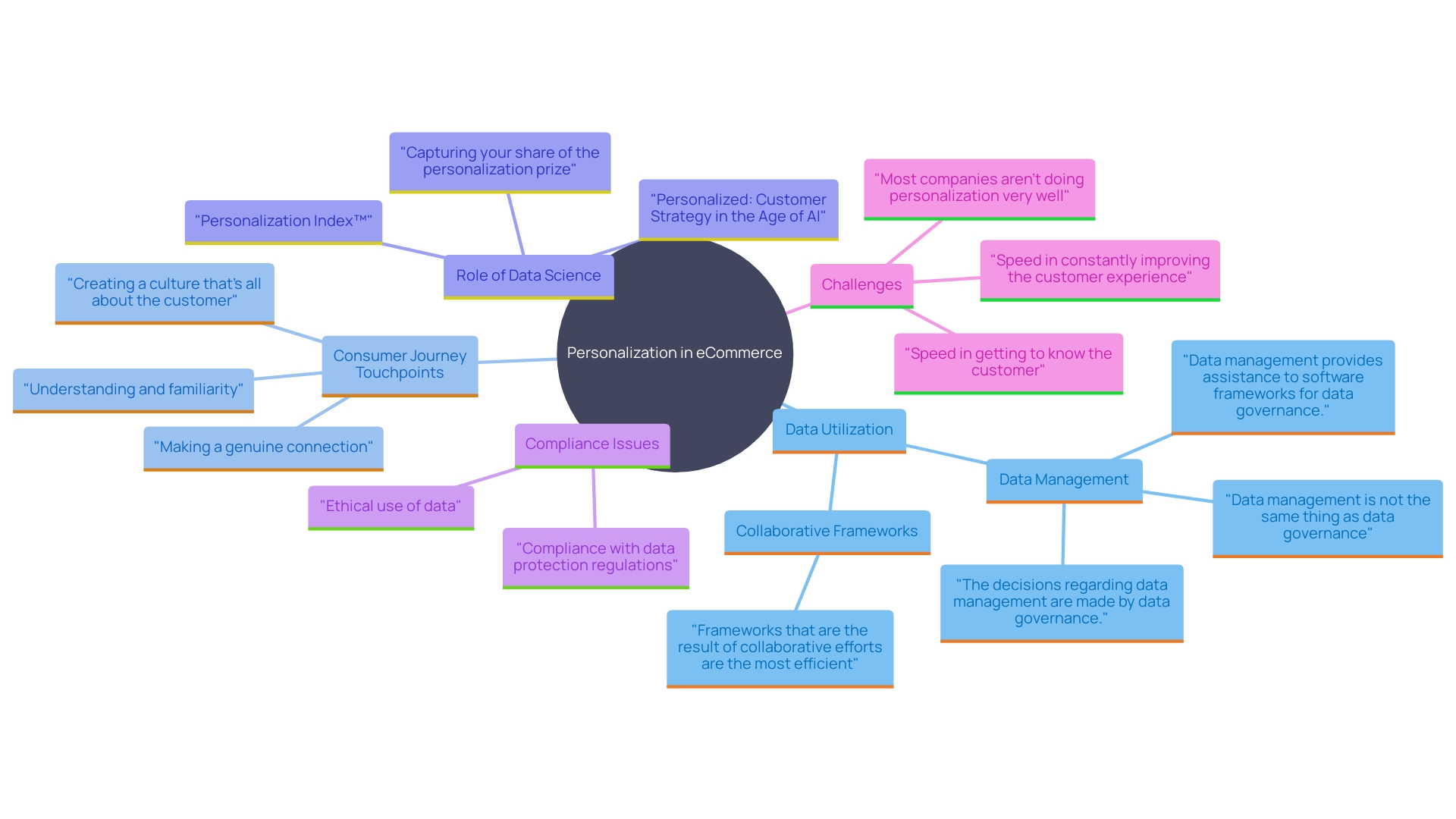
Pros and Cons of Customization
Customization offers significant benefits, such as increased customer satisfaction and loyalty, as consumers feel a sense of ownership over their choices. According to Medallia's research, 61% of consumers are willing to spend more with companies that offer a personalized experience. However, only 23% of hotel guests and 26% of retail consumers report experiencing high levels of customization, indicating room for improvement.
Despite its advantages, customization poses challenges, including increased complexity in inventory management and production processes. Andrew Custage, Head of Insights for Medallia Market Research, notes, "It’s no surprise to see the clear link between personalization and satisfaction, but also not surprising to see brands struggling to keep up with consumer expectations for more customization." Furthermore, excessive customization can overwhelm users, leading to decision fatigue.
Retailers must navigate these complexities to harness the full potential of customization, ensuring they meet consumer expectations while managing operational challenges effectively.
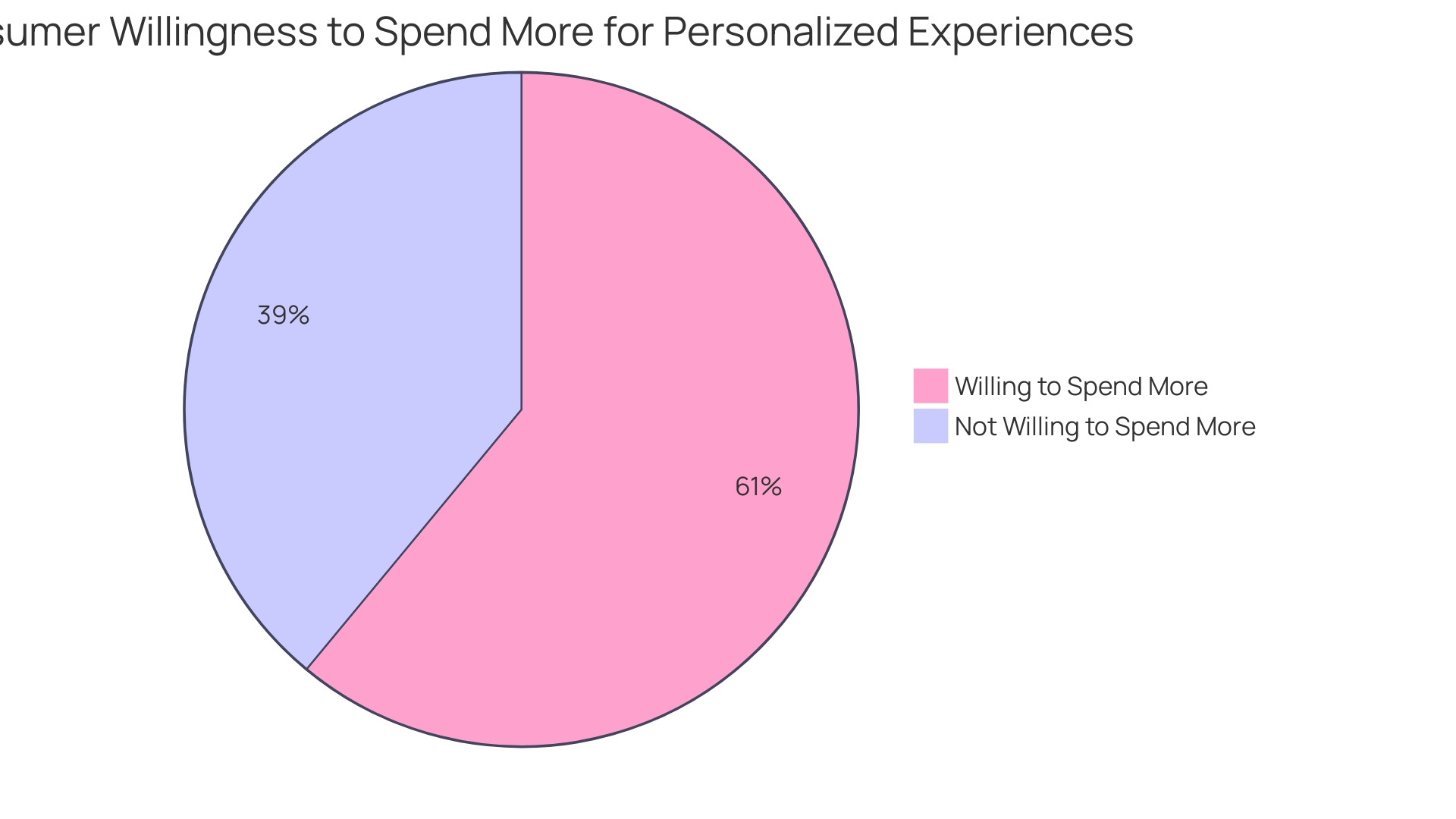
Pros and Cons of Personalization
Personalization in e-commerce provides significant benefits, such as improved client engagement and higher conversion rates. When users receive tailored recommendations, it creates a connection akin to a favorite coffee shop knowing your order before you speak. This level of understanding and familiarity sets businesses apart in a crowded marketplace. According to a Gartner® Report, establishing a culture focused on the client is essential for accomplishing this.
However, customization comes with its challenges. Privacy concerns and potential data security issues are significant drawbacks. Customers are increasingly aware of how their data is used, and any breach can erode trust. Moreover, over-personalization can create a sense of being 'watched,' deterring some individuals from engaging with a brand. As BCG’s tailoring strategy emphasizes, balancing the five commitments of customization—empower me, know me, reach me, show me, and delight me—is essential to avoid alienating clients while leveraging the benefits of individualized experiences.
In the age of AI, customization must be executed with a blend of human touch and technology. Companies like NICE emphasize the importance of meeting customers where they are, whether on mobile devices or other channels of choice. Despite the hurdles, the potential for tailoring to create a competitive advantage is substantial, making it a crucial strategy for e-commerce success.
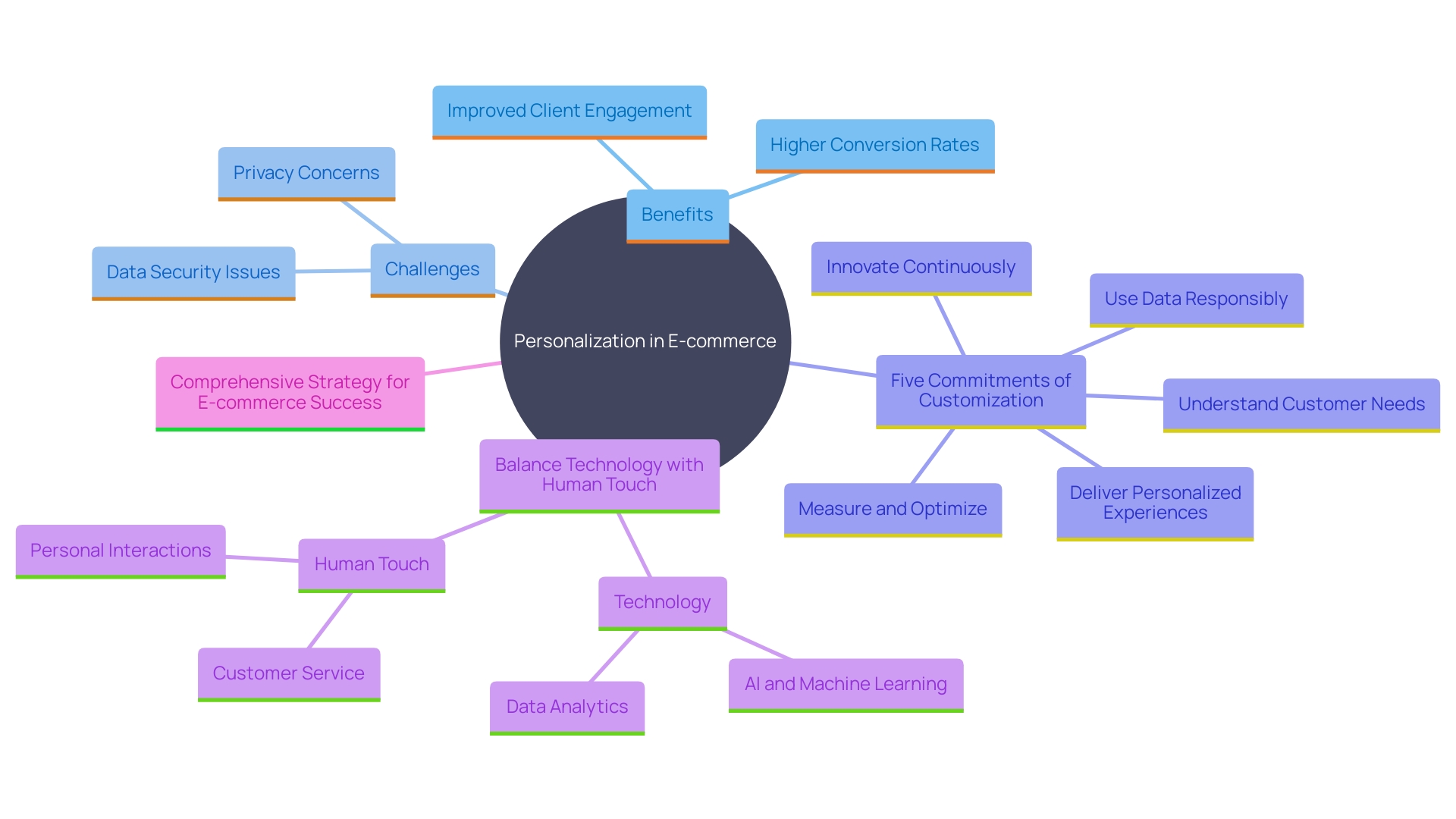
Choosing Between Customization and Personalization: Factors to Consider
Choosing between customization and personalization involves a delicate balance that hinges on understanding your target audience, product type, and operational capabilities. For businesses targeting a niche market that values individuality, customization offers a unique edge. This approach allows customers to tailor products to their specific needs, creating a deeper connection and a sense of ownership. For example, data from various platforms can help build a picture of consumer personas and purchasing habits, facilitating better customization strategies.
Conversely, customization is crucial for brands aiming at a broader audience seeking convenience and relevance. In today's digital world, creating a genuine connection begins with tailoring. It's akin to walking into a coffee shop where they know your order before you say it. This level of understanding and familiarity sets businesses apart in a crowded marketplace. As emphasized in Gartner's report, establishing a customer-focused culture is the basis for effective tailoring. By employing data science, e-commerce retailers can offer actionable insights that decrease client churn and basket abandonment, ultimately improving client satisfaction.
Moreover, the integration of AI and machine learning algorithms has revolutionized customization, making it more dynamic and responsive. Tailored approaches for clients, such as those detailed in BCG’s customization guide, highlight the significance of quick understanding of the client and ongoing enhancement of the client journey. This ongoing cycle creates a competitive moat that is hard to replicate. Ultimately, assessing client preferences and aligning them with your brand strategy is essential in determining whether customization or individualized approaches will produce better outcomes.
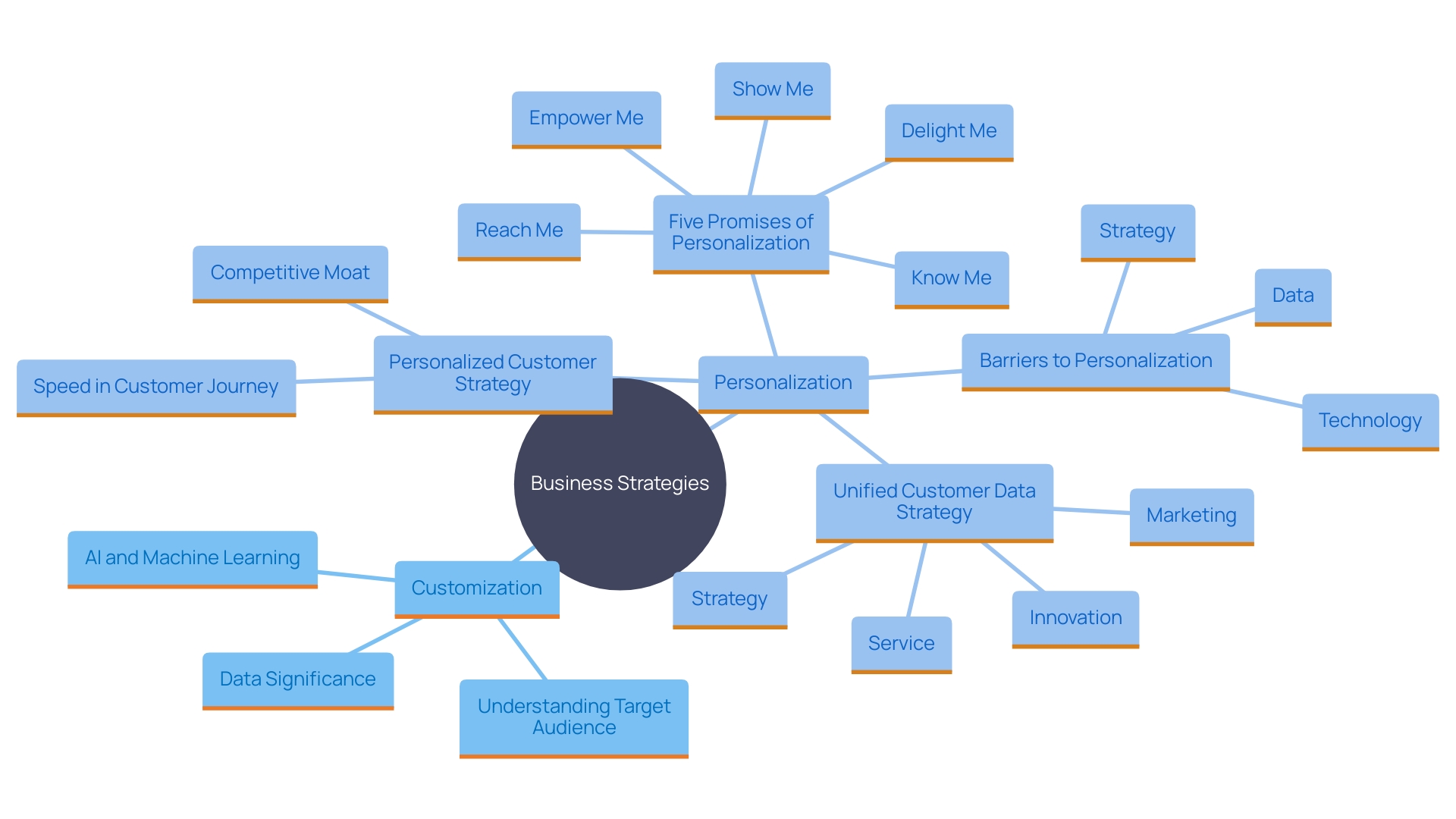
Combining Customization and Personalization for Maximum Impact
Incorporating both customization and tailored experiences can significantly improve the buyer's journey in online shopping. By offering users the ability to tailor their products while simultaneously providing personalized recommendations, brands can craft a seamless and engaging shopping journey. For instance, an individual customizing a laptop with specific features can receive personalized suggestions for accessories that perfectly complement their selection. 'This combination of customization and tailored experiences not only enhances customer satisfaction but also significantly raises the chances of repeat purchases.'. According to a Gartner® Report, creating a genuine connection starts with personalization, akin to a favorite coffee shop knowing your order before you even say it. This level of understanding and familiarity is what sets businesses apart in a crowded marketplace. With U.S. retail eCommerce sales hitting $579 billion in the first half of 2024, the significance of these approaches cannot be overstated. Tailored approaches for clients, particularly those that utilize AI, establish a competitive barrier that is hard to duplicate. As Elizabeth Tobey from NICE points out, meeting customers where they want to be met, whether through mobile devices or other channels, is crucial in today’s digital age.
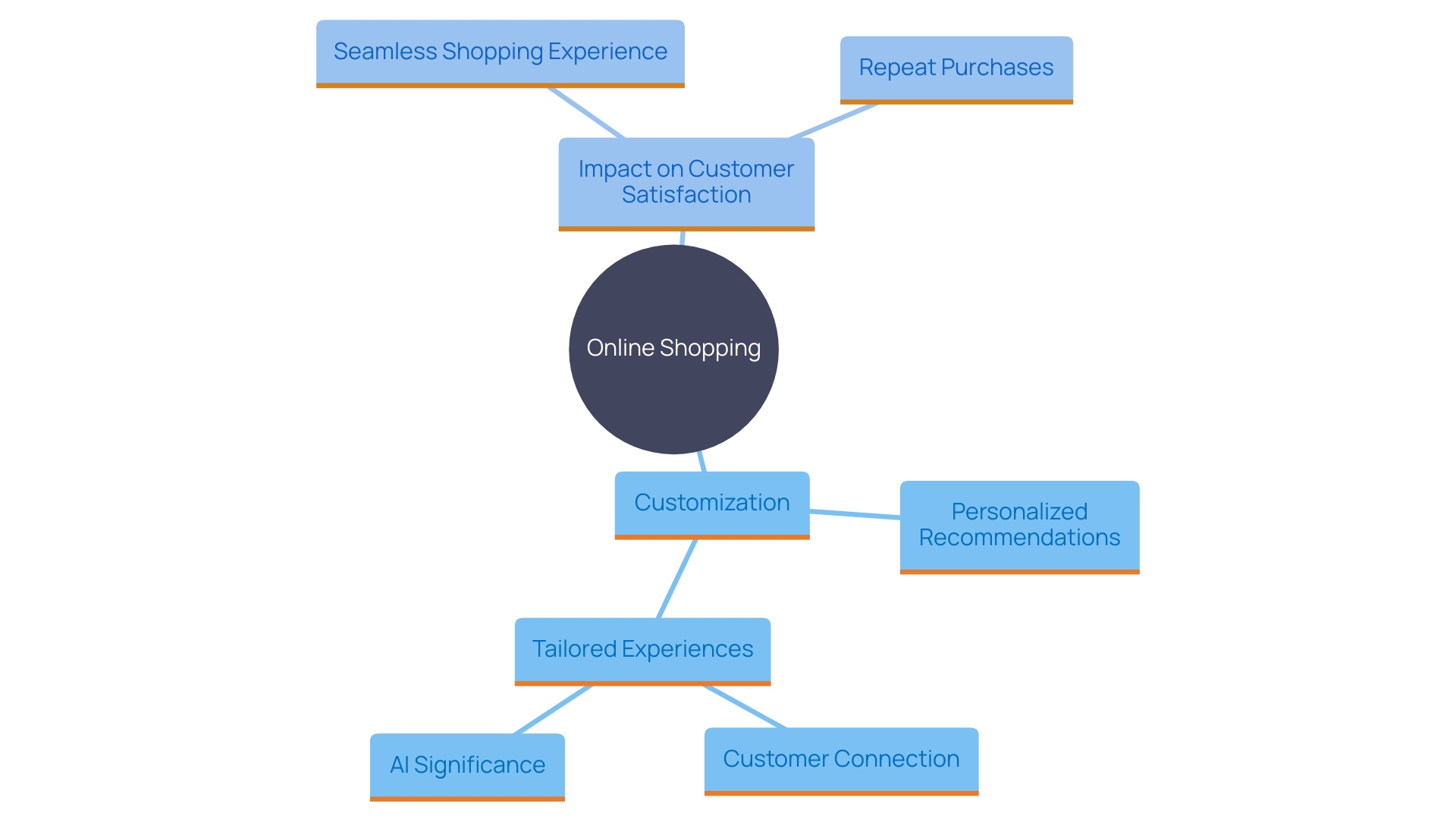
Implementation Challenges and Considerations
Implementing customization and tailored strategies presents a multifaceted set of challenges. Businesses must invest in sophisticated technology that supports comprehensive data collection and analysis, as well as the customization processes. 'According to a Gartner® report, customization is crucial in today's digital commerce landscape, akin to a favorite coffee shop knowing your order before you say it.'. This level of understanding and familiarity sets businesses apart in an overcrowded marketplace.
However, achieving this requires creating a culture centered around the customer. Inconsistent regulations historically governed the vast amounts of personal data necessary for personalization, leading to significant concerns about privacy and data security. The 'personalization paradox' underscores the tension between the convenience of tailored interactions and the concerns over the personal data they necessitate. Thankfully, there's been a shift towards treating personal data as an asset owned by individuals and entrusted to companies, driven by consumer mistrust, government action, and market competition.
Ensuring a seamless user interaction across platforms is another complex challenge. Companies must address privacy and data security concerns, ensuring compliance with regulations while providing tailored interactions. A study of more than 600 leaders from different sectors pinpointed significant obstacles to customization at scale, including deficiencies in planning, technology, and data. These barriers impact growth, brand value, and innovation. To address these, businesses must create a cohesive client information plan, utilizing this information not only for client satisfaction but also for service, innovation, and planning.
The necessity for efficient customization tactics becomes even more evident when taking into account that only 27% of companies are fully content with their capacity to craft truly tailored experiences for clients using information from digital platforms. As technology advances and customer needs grow, companies must adopt sophisticated tailoring techniques to distinguish themselves from the competition. This involves fulfilling the five commitments of customization: empower me, know me, reach me, show me, and delight me. Incorporating these promises requires a blend of human touch and the right technology, creating a competitive advantage that is hard to replicate.

Case Studies and Examples of Successful Customization and Personalization
Multiple brands have effectively utilized the power of customization to drive success. Coca-Cola’s ‘Share a Coke’ campaign, for instance, allowed consumers to customize bottles with their names, leading to a remarkable boost in sales. 'This initiative is a classic example of how tailored experiences can create a deep connection with customers, akin to walking into your favorite coffee shop where they know your order before you even say it.'.
Netflix, on the other hand, leverages advanced personalization algorithms to recommend shows and movies tailored to individual viewing habits. This strategy significantly enhances user engagement and retention. In today’s digital marketplace, understanding and anticipating client needs is not just an advantage but a necessity.
Additionally, insights from Gartner highlight that tailoring experiences is about establishing a genuine connection with clients, which distinguishes companies in a competitive market. A tailored approach for clients, as described in BCG’s book, 'Personalized: Client Approach in the Age of AI,' clarifies individualization on a large scale. The book highlights the significance of the five commitments of tailoring: empower me, know me, reach me, show me, and delight me.
These case studies emphasize that well-executed tailored strategies can significantly enhance client loyalty and revenue. However, achieving this requires a culture and system that prioritize speed in understanding and continuously improving the customer experience. While a small percentage of companies, especially digital natives, are excelling in one-to-one, advanced personalization, many still have a long way to go to unlock its full potential.
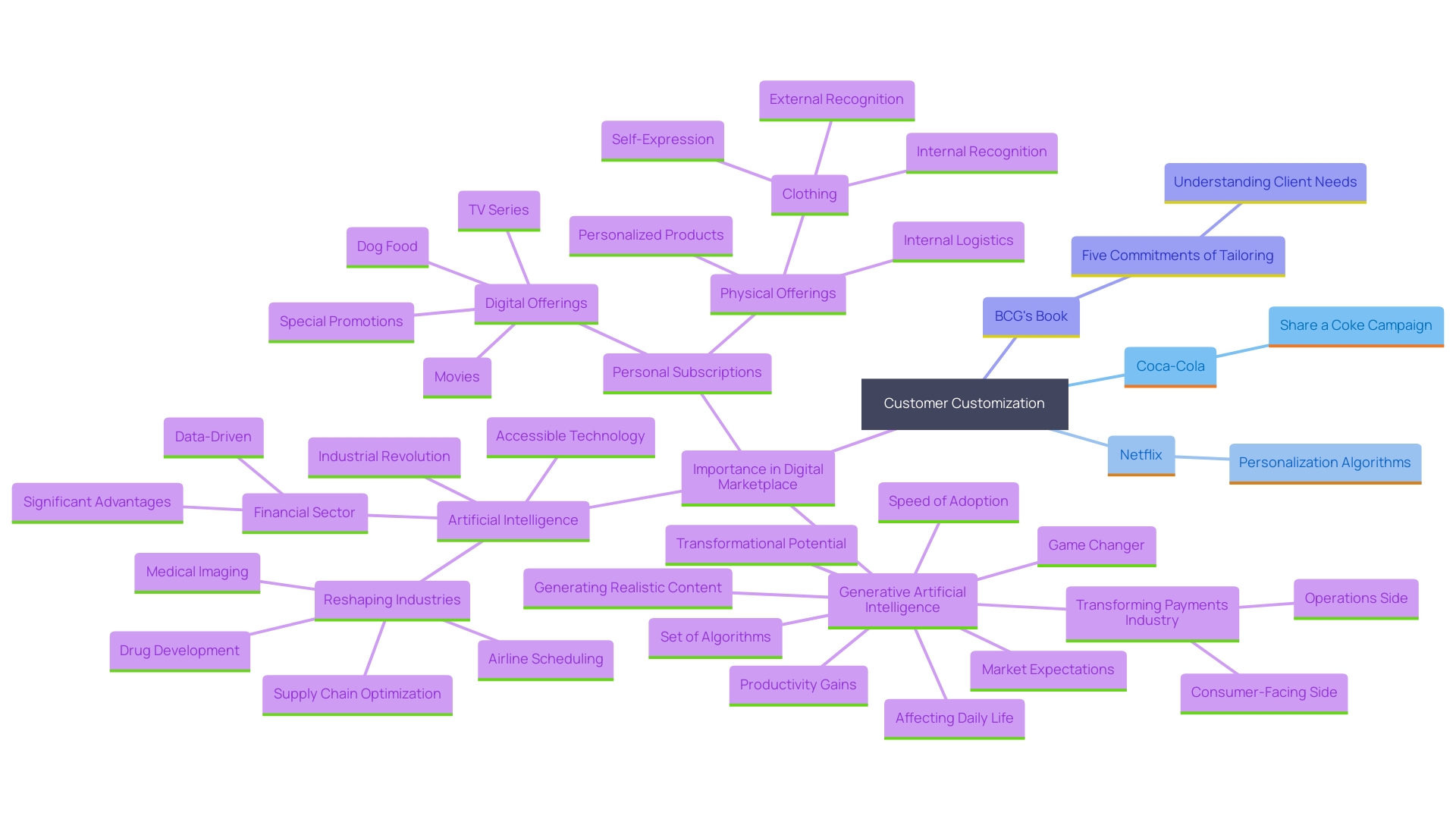
Conclusion
The exploration of customization and personalization in eCommerce reveals their critical roles in shaping customer experiences and driving business success. Customization empowers consumers to tailor products to their individual preferences, enhancing satisfaction and creating a sense of ownership. This user-driven approach not only fosters deeper connections with brands but also allows businesses to differentiate themselves in a competitive landscape.
Conversely, personalization leverages data analytics to create tailored experiences that resonate with individual customers. By understanding consumer behavior and preferences, businesses can deliver relevant recommendations, enhancing engagement and boosting conversion rates. The integration of advanced technologies, such as AI and machine learning, enables companies to implement effective personalization strategies that adapt to evolving customer needs.
However, both strategies come with their challenges. Businesses must navigate the complexities of inventory management and data privacy concerns while ensuring a seamless user experience. The balance between customization and personalization is essential, as each serves distinct audience segments and operational capabilities.
A unified approach that combines both strategies can lead to a more enriched shopping journey, ultimately driving customer loyalty and revenue growth.
In summary, the future of eCommerce lies in the ability to effectively blend customization and personalization. Companies that master this dual approach will not only meet but exceed consumer expectations, establishing a competitive advantage in an increasingly crowded marketplace. Prioritizing these strategies is not just beneficial; it is imperative for long-term success.





